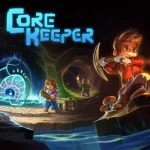
Toca Boca World
All trademarks belong to their respective owners.
Advertisement
Popular Now
Toca Life is renowned for its open-ended gameplay and vibrant world-building, enabling players to craft their own stories. However, one often-overlooked issue is the limited depth of character interactions. While the game offers a variety of expressive characters, the scope for emotional or nuanced relationships is somewhat constrained. This article dives into this specific challenge, exploring how limited interaction depth impacts storytelling and offering strategies to expand character dynamics within the game.
The Appeal of Toca Life's Characters
The Role of Visual Cues in Enhancing Relationships
 Version 1.0.0[/caption]
Version 1.0.0[/caption]
The Appeal of Toca Life's Characters
A Diverse Cast of Characters
Toca Life boasts a wide variety of characters, each with unique appearances and implied personalities.Why They Work Well:
- Diverse visuals cater to all players.
- Easy-to-customize characters make storytelling versatile.
The Initial Drawbacks
While the game encourages creativity, character interactions are often surface-level, limiting the complexity of relationships.What Defines Interaction Depth in Gameplay?
Simple Versus Complex Interactions
Toca Life relies on basic interactions like passing objects, changing expressions, or sitting characters together.Examples of Simple Interactions:
- Giving a character food or clothing.
- Placing characters in specific scenes to suggest relationships.
The Missing Layers
Without verbal or emotional cues, players must rely entirely on their imagination to add depth, which can be a hurdle for younger or less experienced players.How Limited Interactions Impact Storytelling
Restricting Relationship Dynamics
Without meaningful character exchanges, relationships often feel static.Examples:
- A “best friend” relationship looks no different from two strangers in-game.
- Family dynamics lack any unique emotional representation.
Frustrating the Storytelling Process
Players aiming for complex narratives, such as reconciliation after an argument, may struggle due to limited tools to express emotions.Strategies for Expanding Interaction Depth
Creative Workarounds for Players
Despite the limitations, players can improvise and create dynamic character stories.Methods:
- Props as Symbols: Use items to represent emotions (e.g., flowers for apologies).
- Scene Transitions: Change settings to show the progression of relationships.
Collaborating with Other Players
Sharing custom stories or setups online can inspire new ways to depict complex interactions.The Role of Visual Cues in Enhancing Relationships
Utilizing In-Game Expressions
Character expressions are one of the few tools for showing emotions in Toca Life.Suggestions for Better Use:
- Combine specific expressions with matching props.
- Use repeated actions to signal emotional changes (e.g., giving hugs to show care).
Parents and Educators: Encouraging Deeper Storytelling
Teaching Emotional Complexity Through Play
Parents and educators can help children understand relationships by guiding gameplay.Techniques:
- Ask open-ended questions about the characters' emotions (“Why is this character upset?”).
- Encourage role-playing with emotional scenarios, such as resolving a disagreement.
Linking Gameplay to Real Life
Relating game interactions to real-world relationships helps kids grasp emotional nuances.Developer Opportunities to Enhance Character Depth
Introducing Advanced Features
Developers can add tools to allow for richer interactions between characters.Proposed Features:
- Dialogue Options: Simple, customizable text bubbles for characters.
- Relationship Status Indicators: Icons or labels for connections like “friends” or “family.”
- Emotional Reactions: Characters could display unique animations or behaviors in response to specific events.
Learning from Similar Games
Insights from Other Sandbox Games
Games like The Sims and Animal Crossing incorporate deeper relationship mechanics, offering valuable lessons.Features Worth Emulating:
- The Sims: Relationship meters to track character bonds.
- Animal Crossing: Personalized dialogue and interactions tied to character personalities.
The Future of Emotional Storytelling in Toca Life
[caption id="attachment_1298" align="aligncenter" width="600"] Version 1.0.0[/caption]
Version 1.0.0[/caption]
A Vision for More Interactive Gameplay
By combining creative player strategies with developer enhancements, Toca Life could evolve into a platform for more engaging and emotionally rich storytelling.Steps Forward:
- Introducing interaction-focused updates.
- Collaborating with the community to design features based on player needs.

















